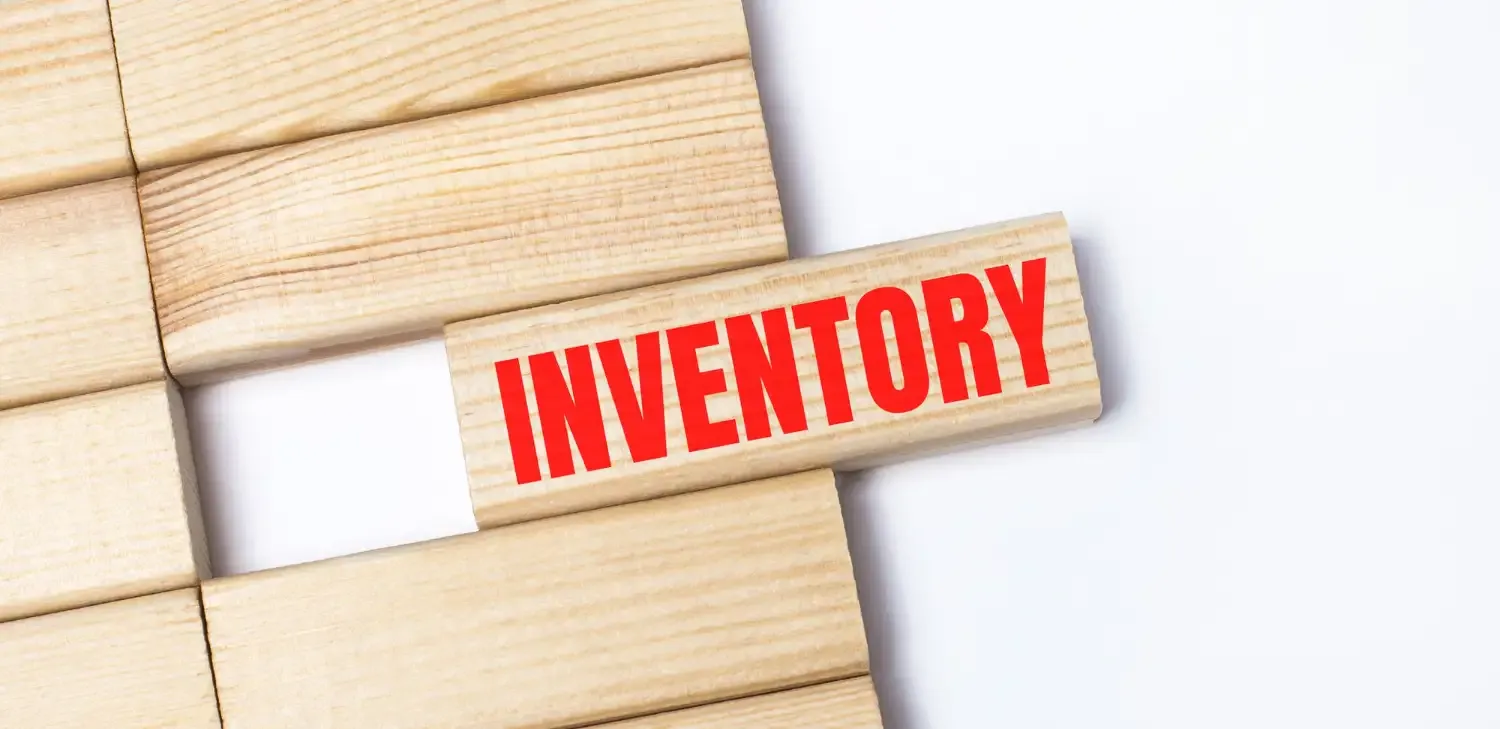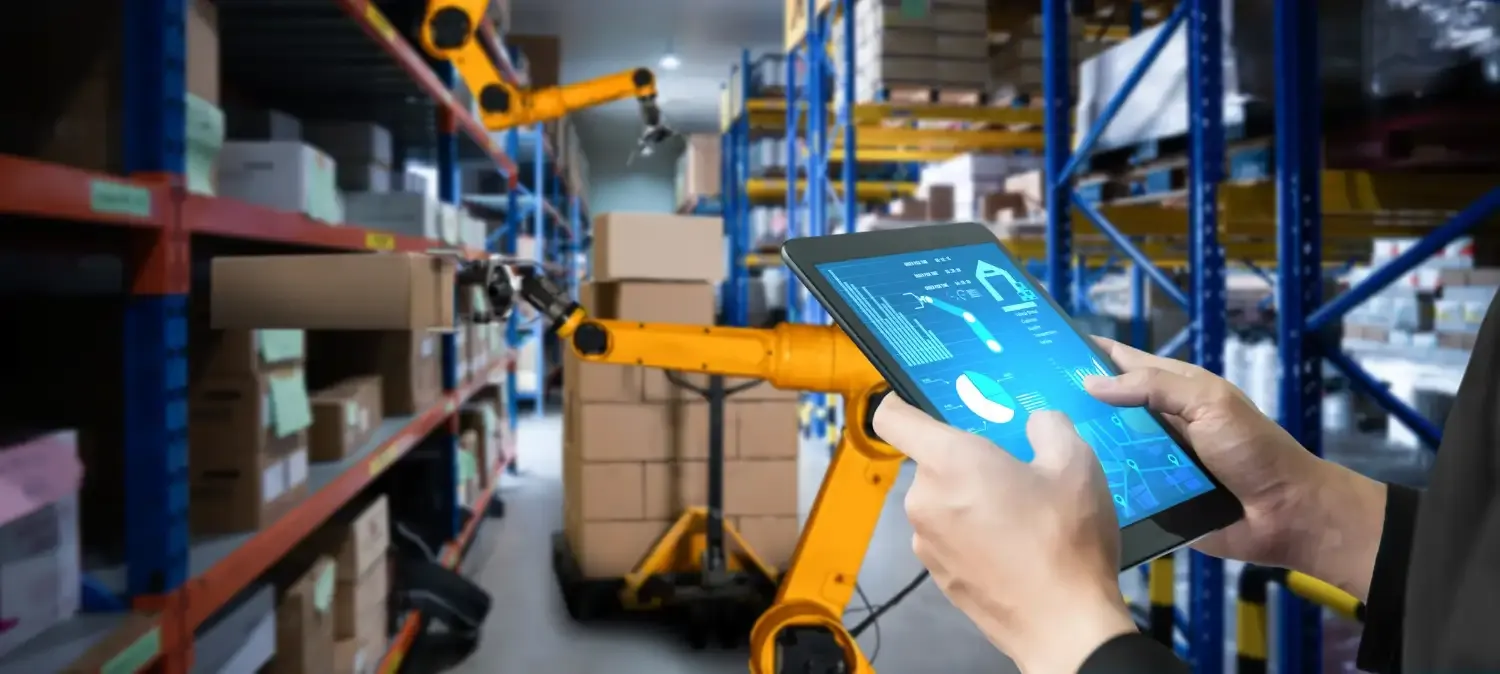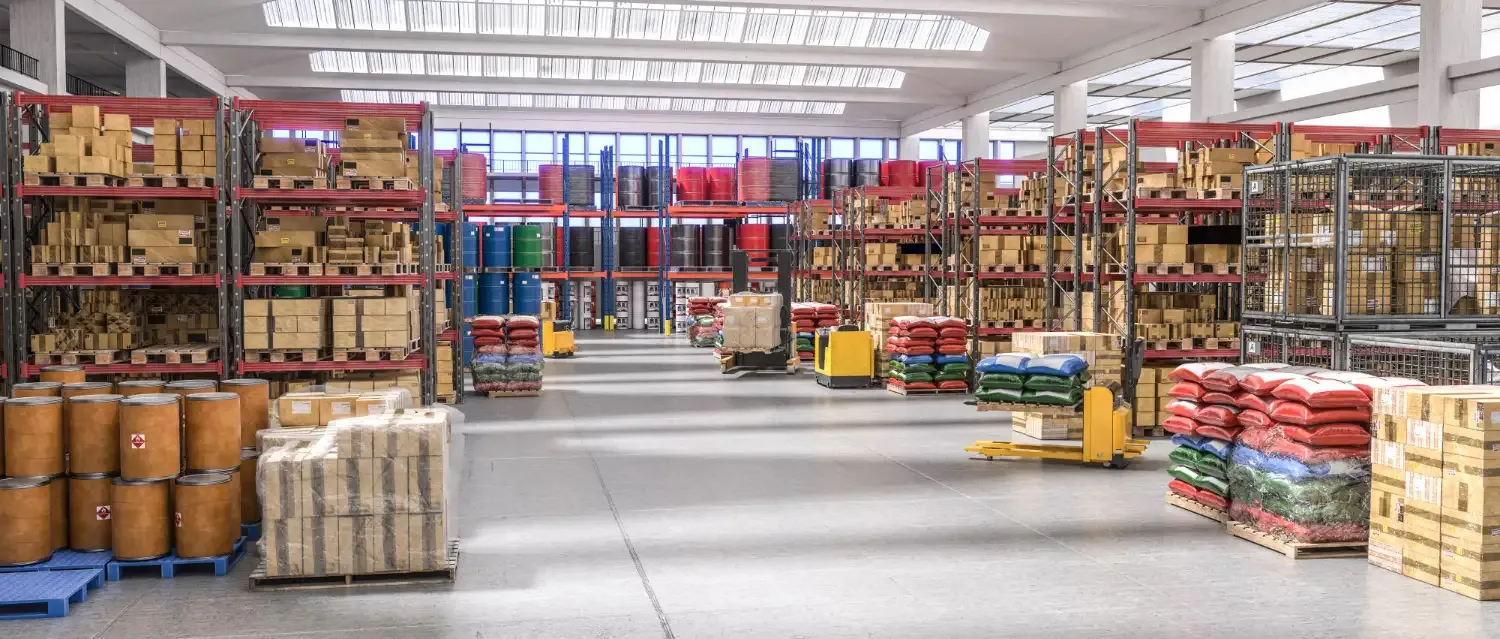Inventory management is crucial as it transforms your inventory from a potential liability to a valuable asset by managing it effectively. Therefore, it is essential to implement a robust inventory management strategy to optimize operations across all your stores.
Effective inventory management helps you to arrive at the optimum level of inventory that is not much or too little for smooth production cycles. There are several different types of inventory management, each with its own benefits and techniques.
This blog post will help you understand the importance of inventory management, and types of inventory management strategies and techniques to empower your business in the long term. We will also cover inventory management benefits and challenges along with a guide on how to choose an inventory management software.
Read Inventory vs. Stock: What’s the Difference & Why It Doesn’t Really Matter.
What Is Inventory Management?
Inventory management is the process of supervising and controlling the movement of goods and materials within a business. This includes processes such as purchase orders, warehouse management, and maintaining stock levels.
Inventory management is important because it helps businesses keep track of their inventory, reduce excess stock, and ensure that the production teams have enough stock to meet customer demand.
Therefore, inventory management's importance is reinforced by how it helps businesses to improve efficiency and profitability. The key to a successful business lies in deploying an efficient inventory management process and setting a systemic rhythm for the flow of goods through the company.
It helps you to avoid out-of-stock and overstock scenarios. For several decades, inventory management was done manually, but now businesses can access smart and automated ERP solutions to streamline inventories far more productively.
The next section will highlight the inventory management importance in detail.
Read Inventory Management: TCS vs. TranZact Automation Benefits.
Why Is Inventory Management Important?

When there's a large amount of unused inventory lying in your warehouse, it leads to an increase in storage and handling costs. Additionally, with time, unused inventory can also turn into a liability as it becomes irrelevant to the market.
On the other hand, if you do not have enough inventory, you won't be able to fulfill orders in time due to production delays. Thus, you might encounter risks of losing potential sales, leading to dissatisfied customers. Based on the functions of an inventory management system, effective inventory control mitigates such risks of overstocking and shortage by ensuring that a business has the right products in stock to meet customer demand.
Inventory management also helps to track inventory across all production levels within a manufacturing business. Such visibility and transparency eliminate the risk of inventory becoming obsolete or expiring. It can also help to improve the accuracy of a business's financial statements by ensuring that inventory levels are correctly reflected in the books.
Learn Comparison between Odoo Inventory vs TranZact.
Benefits of Inventory Management

Based on its diverse functions, the following are the important benefits of inventory management:
Efficient use of resources
It prevents hoarding of unnecessary stocks and reduces the wastage of expensive resources such as stockroom space and maintenance costs.
Timely deliveries
Since you are in complete control of the inventory at all production levels, delays in order fulfillment are unlikely to happen due to the unavailability of stock. You can predict production schedules and align your inventory well in advance.
Protection against theft
Complete visibility of inventory with computerized audit trails helps to mitigate the chances of theft.
Improve your sales strategies
Automated and insightful data gathered through inventory sale help to identify profit-making stocks that sell out fast and also those that are not in demand. Based on this information, you can make better sales decisions.
Read TranZact Vs Tally: Effective Inventory Management Solutions.
Inventory Management Challenges

As a process, the importance of inventory management cannot be ruled out but it comes with its own set of concerns. We have outlined the challenges of inventory management below for your reference:
Lack of digitization
Relying on manual processes without automated systems can make your inventory prone to human errors and significantly cost your business in terms of time and revenue.
Integration with other business systems
The inability to source the right products at the right time for error-free production is one of the most important challenges for manufacturing businesses.
While effective management of inventory can solve this problem, it demands seamless integration with other systems, such as sales and production modules. But a manual inventory management method may not be able to fulfill this need and collaborate across functions.
Absence of centralized management
Also, stocktaking can be very difficult if your inventory is located at multiple places and there is no central management system. This may lead to problems during shipments and create production delays.
Smooth inventory flow
Your products must constantly be updated to remain competitive and relevant in the market. Hence, it is essential to clear out obsolete inventory as soon as possible and make room for the latest ones for a smooth inventory flow.
Zoho Inventory vs TranZact, what is better?
What Are the Different Types of Inventory?
Broadly, there are four types of inventory which include:
Raw Materials
The primary materials used to produce finished goods are called raw materials. These unused items are still not in the work-in-progress or finished stage. E.g. plastic for manufacturing toys, and leather for making jackets.
Work-In-Progress (WIP)
WIP inventory accounts for all the items that are in the production process or are partially completed. E.g. Half assembled products, such as components of a printing machine, are included in this category.
Finished Goods
After the final production process, whatever item is out for sale includes the finished goods inventory. E.g. packaged toy or a fully ready printing machine.
Maintenance, Repair, and Operating Supplies (MRO)
MRO inventory software facilitates the production process but is not part of the product itself. E.g. gloves required to handle the products, light bulbs, and face shields. Having understood why is inventory management important and the types of inventory management, let's understand the inventory management process in the next section.
Read Also - Inventory Analysis: Tips, Benefits, and KPIs
Inventory Management Process

The main stages of the inventory management process are:
Purchase
The first step is purchasing raw materials or semi-finished goods to turn into finished goods which are then sold to the customer.
Stock holding
Both raw materials and semi-finished goods require simplified and organized storage before they are taken forward for production.
Sale
When the inventory is sold to the customer, and the payment is received, a sale takes place.
Report
Inventory reporting consists of assessing the current levels of inventory for a business, how much inventory was sold, and what is the future demand for inventory stocking. Inventory reports can be used to track changes in inventory levels over time and can help businesses to identify trends and patterns in their inventory usage.
Inventory Management Techniques

The following is a list of the common types of inventory management strategies and techniques that your business can adopt:
Just-in-time (JIT) inventory
It is an inventory management strategy that ensures raw material procurement is aligned in time to meet the needs of the production process, rather than being produced or acquired in advance and stored in inventory. It brings down the inventory-related costs by bringing in the goods "just in time" that your production cycle needs it.
ABC inventory analysis
This method divides inventory into A, B, and C categories. The highest profit-deriving inventory is placed in category A, followed by B and C, with lower and the lowest profit-yielding capacity, respectively.
Dropshipping
Businesses can cut down on their inventory costs significantly with the dropshipping method. Here, the business does not need to hold any inventory, and when any customer places the order, they simply buy it from a third party and ship it to the customer.
Bulk shipments
If you are sure about your sales, you can order items in bulk. This method may lead to cost savings.
Consignment
The consignment technique involves a retailer and a wholesaler (consignor), where the wholesaler sells goods to the retailer (consignee) without any upfront payment. The consignor owns the goods until the time the consignee sells them. The payment to the consignor is made only after the sale is done by the consignee.
Cross-docking
This technique does not hold inventory. Instead, when products are delivered at the warehouse, they are immediately prepared for shipment and are reloaded into trucks for further delivery.
FIFO and LIFO
The FIFO method believes in the First-In, First-Out system which means that the older inventories are sold first so that none of the items turn obsolete. On the other hand, the LIFO or Last-In-First-Out method believes that the latest in-stock inventory must be sold out first.
Safety stock
The safety stock inventory management technique is like an emergency fund for unforeseen situations that may arise due to a change in market conditions or flawed decision-making. The extra inventory is kept aside to fulfill needs when the business encounters ad-hoc shortages or any other catastrophe.
Material Requirement Planning (MRP) Technique
When the sales forecast is considered before placing an order for the inventory, it is also known as the MRP technique. The data for forecasting is collected from various business departments connected with inventory usage such as sales, purchases, and production.
Economic Order Quantity (EOQ)
While ordering fresh batches of inventory, the EOQ model helps you calculate the exact amount of units that are required to bring down your order costs. This prevents the need to order frequently and ensures that you have the right amount of inventory stocked up. Here, the constant consumer demand is pre-assumed.
Read 10 Common Inventory Management Mistakes and Tips to Avoid Them
Demand Planning And Inventory Management

Demand planning works on the demand forecasts made, based on past sales, trends, upcoming events, seasonal demand spikes, or other occasions. When you are able to predict customer demand, you can make better decisions about what to stock and what to sell out quickly.
Inventory management, on the other hand, involves overseeing the flow of goods within an organization, including ordering, storing, and handling them. Demand planning is a part of the inventory management process, and both of these activities are important parts of supply chain management. It's important to optimize inventory levels and strike a balance, to have enough inventory to meet customer demand. With accurate demand planning and inventory management, businesses can minimize wastage and meet customer demands effectively.
Inventory Management vs Other Processes

Comparing the role of inventory management to other processes, enables us to understand the importance of inventory management accurately. This section will help us do that:
- Inventory Management vs Inventory Control
Inventory management is the process of tracking the quantities of goods in stock, projecting future demand, and procuring supplies as needed to ensure that the business has the right amount of products on hand to meet production demand. Inventory control includes all the specific activities related to handling the stock in hand and control of inventory. This can include activities such as conducting physical counts of inventory and setting up a workflow to oversee inventory movements.
- Inventory Management vs Inventory Optimization
Inventory management helps you to manage the imbalances in demand and supply. The primary objective of inventory management is to ensure that the business has the right amount of inventory at the right time, while also minimizing costs and maximizing profits. Inventory optimization helps in achieving the most optimum usage of the inventory so that the business does not spend excess money on storage costs.
- Inventory Management vs Order Management
Order management is the process that supervises all customer orders throughout the order lifecycle right from when they are placed to when they are fulfilled. However, inventory management includes all stock-related functions that are crucial for fulfilling orders on time such as monitoring raw materials, and production demand. It ensures the availability of accurate inventory for order fulfillment.
- Inventory Management vs Supply Chain Management
Supply chain management is the process of administering the complete product workflow, which begins at the origin of products and ends at the product's consumption. Inventory management is a subset of supply chain management and is in charge of all the stocks that have reached the business for further production and sale.
- Inventory Management vs Warehouse Management
Warehouse management focuses on the inventory located at a specific place, warehouse, or store. In addition, it looks after the product flow, and the requirement of labor, within the warehouse. Based on the scope of inventory management tools, it may also manage processes, such as supply chain, demand forecast, and more, in and out of the warehouse, in addition to its primary functions of inventory tracking.
- Inventory Management vs Logistics
Logistics management is the process that specifically organizes, plans, implements, and controls the flow and movement of goods efficiently. In contrast, inventory management is responsible for all other stock-related operations, such as accurate item updation, storage, establishing safety stock levels, stock handling, allocation, reorder points, and monitoring of all incoming and outgoing inventories of the business.
- Inventory Management vs ERP
Enterprise resource planning (ERP) system that helps organizations manage and integrate various business processes, such as production, inventory, financials, human resources, supply chain management, and manufacturing. Inventory Management, on the other hand, is concerned with everything related to the management of inventory operations only.
Read Best Inventory Management Software for Small Business.
What Is Inventory Management System?
Managing inventory for a large number of products or multiple locations can be complex and time-consuming. An automated inventory management system combines hardware, software, and technology to automate inventory operations. These multidimensional capabilities result in full-proof inventory tracking right from when it enters your business to when it leaves. The best inventory management software for small business would ideally integrate all supply chain stages, i.e. purchase, production, material requirements planning, and sales. Thereby, it fulfills all gaps that manual stock management is unable to fulfill, in terms of speed, accuracy, and productivity.
An inventory management system is important for you to avoid under-stocking or over-stocking, control storage and carrying costs, and avoid inaccuracies in inventory counts. It also helps you be prepared with the right quantity of the right inventory at the right time.
Read Also - What Is Vendor Managed Inventory?
How to Choose an Inventory Management System?

The following factors are important to consider when you choose an inventory management software:
Adaptability
Different businesses have different needs. While selecting your stock control system, do check how well it integrates with the requirements of your business. Your inventory management system must also be easy enough to be adapted by your employees. It must have the flexibility to evolve as your business grows and the requirements change.
Free Trial
Exhaustive trials are a must. You will only know the software's limitations and benefits once you take the trial and explore all features of the inventory solution. So look for inventory software options that offer a free trial for a reasonable amount of time.
Your budget
When it comes to budget, it's important to research adequately and select an inventory software that meets all your needs within the budget. Also, it's important that you do not compromise on the quality of the software because of costs. Keep a fair budget in your mind and try to find budget-friendly options.
Read Best Inventory Management Software for Small Business.
Gain the Best Inventory Management Benefits With TranZact
A robust inventory management system is crucial in making your daily business activities profitable. You can access real-time inventory updates about shortages and stock utilization by upgrading to a user-friendly inventory management solution like TranZact.
Understand How does TranZact help you Manage Inventory Efficiently?
It makes inventory tracking exceedingly simple with precise automation of inventory and documentation operations. TranZact offers a smart business dashboard that enables effortless monitoring of all inventory data in addition to data from other business operations. This enables accurate and data-driven decision-making.
As the best inventory management software, it is highly flexible and interconnects with sales, production, material planning, and purchase functions. If you are still confused about which software is the best inventory management software in India, simply take TranZact's free demo!
FAQs on Inventory Management
1. What is inventory management with example?
Inventory management refers to the process of overseeing and controlling the flow of goods and materials within a business. For example, a manufacturing business implementing inventory management practices would track and manage the quantities of products it has in stock. It would reorder items when inventory levels are low, and ensure efficient inventory turnover to meet customer demands.
2. How can I improve inventory management in my business?
You can improve inventory management in your business by implementing accurate demand forecasting and monitoring inventory movements in real-time. Adopting efficient inventory tracking software and implementing lean inventory practices are also important steps toward this.
3. How does inventory management work?
Inventory management is a systematic approach to monitoring and controlling all aspects of inventory within a business. It encompasses activities such as inventory tracking, demand forecasting, order fulfillment, and inventory optimization. This ensures the right products are available in the right quantities, at the right time, and in the right locations.
4. What are the objectives of inventory management?
The primary objectives of inventory management are:
- To maintain sufficient stocks to meet customer orders on time by having products ready.
- To keep losses and wastage to the minimum possible level by ensuring cost-effective storage.
- Identifying & managing loss-making inventory
5. What is multi-location inventory management?
Multi-location inventory management is a system that operates from more than one location and enables storage at multiple places. Having logistic centers at various locations requires inventory management software that can work across different facilities in an integrated manner.
6. What are the 3 types of inventory management?
The following are the 3 types of inventory management:
Manual inventory management system
Here, inventory is scanned, counted, and entered manually for the records. Perpetual inventory management system It is an error-free method of keeping inventory records that updates each item's status and costs throughout every stage of the product life cycle.
Periodic inventory management system
This method leverages both manual and perpetual inventory management processes and is usually conducted periodically (weekly, monthly, or yearly).
7. What is ERP inventory management software?
ERP inventory management software is an ERP tool with a specialized module for inventory management. It is a centralized platform for all processes required to manage inventory. As a result, it increases efficiency and revenue for the business by reducing wastage and minimizing overstocking.
8. Which software is recommended for inventory management?
TranZact is a cloud-based business automation tool that allows you to manage your inventory easily and for free. With its free forever plan you can use all its base features for free for an unlimited period of time. It is a one-stop solution to manage all the inventory operations of your business.
Benefits of TranZact inventory management:
- You can track your stocks for excesses and shortages on a live basis.
- You can view regular inventory insights on the inventory dashboard to streamline your business processes.
- You can streamline your warehouse management for smooth functioning, even if you have multiple stores.
- TranZact automatically adjusts your stocks by tracking your invoices and purchase orders.
- It offers inventory valuation with FIFO and average pricing methods.
- It helps you manage dead/ rejected stock easily and helps to maintain min/max stock levels.It provides barcode tracking for seamless physical stock reconciliation.It is trusted by over 10,000 Indian manufacturing SMEs!















